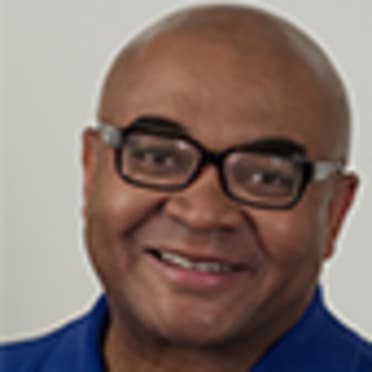DENVER -- Your Rockies questions deal with ever-present trade rumors (nothing has happened), free agency and Minor League affiliates. Before the answers, though, this is a good time to explore a couple ideas from manager Bud Black’s press availability last week.
Black:
• has swung toward liking the designated hitter in both leagues;
• likes the expanded postseason;
• doesn’t like the three-batter minimum for relievers because it tilts toward teams with more resources;
• enjoys beginning extra innings with a runner at second base in extra innings (although he wouldn’t mind playing an inning or two conventionally, then adding the runner);
• and suggests modified doubleheaders (nine innings first game, seven second).
But two of Black’s other answers play into a principle I want to discuss here: I’m for highlighting skill, athletic ability and movement over calculations.
His thoughts:
• Adopt the DH, but eliminate it once the starting pitcher leaves the game.
• He is prepared for “hard discussions” toward regulating defensive shifts.
Eliminating the DH at the first pitching change could heavily discourage use of an “opener” -- a starter who faces few batters before turning the game over to a parade of relievers.
The cliché is that a team’s momentum begins with the starting pitcher. The good ones work through a lineup and adjust -- it helps make the sport. The rest should be striving to do that. Using the “opener” feels like the lowest common denominator -- this pitcher can’t get through a lineup three times, so don’t let him try.
Eliminating the DH once the starting pitcher leaves also forces teams to use their depth in a traditional National League manner, since they don’t want relief pitchers batting.
As for the shift, I am bothered that the line drive through the middle -- a long-held principle of hitting -- has become an out, through no added ability of the pitcher or the fielder. I feel the same about the hit that lands between the infield and outfield.
My idea: Before the pitcher starts his motion, keep the second baseman and shortstop on his side of the field -- with an area behind the bag off-limits when there isn’t a runner at second base. I’d also establish a maximum depth for infielders that’s enforced by the umpires.
There is still opportunity to shift. It would take great athletic ability to dash to a spot, and adjust to a batted ball. If a fielder in motion can reverse his run and steal a hit, more power to him.
The defensive strategy I would not eliminate is the fifth infielder. That’s just plain fun.
Now, your questions:
If Nolan Arenado does go, does that make a Trevor Story deal more or less likely? Would it signal a total sell for the more distant future, or is it likely to lead to money spent on a long-term Story deal?
-- @NMariano53 on Twitter
I preface by saying trades involving Arenado and/or Story aren’t guaranteed.
Your scenario suggests dealing just Arenado this offseason. The question from there is whether the Rockies receive enough back in immediate help to push into the postseason race this year, plus bona fide prospects to make the future brighter.
Then, the Rockies at least have a chance to play well enough not to be considering dealing Story at the Deadline. And such a deal may provide enough payroll relief for the Rockies to compete with others when Story hits the free-agent market.
Do the Rockies have any hope of signing a BIG BAT? Where are they with payroll flexibility?
-- @ConnH71 on Twitter
Black mentioned during his availability that the team wants a proven hitter in the outfield or on the right side of the infield. When you hear that, you can’t help but dream of DJ LeMahieu, Marcell Ozuna, Jackie Bradley Jr. or Michael Brantley. But nothing I have heard puts them in play for any of them.
Could a trade bring players who can help, even if it means subtracting one of the stars?
You can improve a bullpen with smart shopping, rather than big-dollar buys. It’s hard to do that with a lineup. But can the team as constructed improve with an addition such as Jonathan Schoop, Brad Miller or Jonathan Villar?
With the recent MiLB reorganization, why do the Rockies seem dead set on having affiliates at seemingly every corner of the country and not central in one area closer to Colorado?
-- @SlamHilliard22 on Twitter
Three of the four affiliates are in the Mountain (Triple-A Albuquerque) and Pacific (Class A Fresno and Class A Advanced Spokane) time zones, which is reasonable, given the Minor League landscape. The big question is Double-A Hartford, which is a long way from everything.
While MLB took geography into account in influencing the new Minor League setup, Double-A was always going to be difficult, since the Texas League is the westernmost circuit at that level.
Even with obvious travel concerns, the Rockies are happy with the partnership with Hartford. The teams worked together through a difficult 2015 without a home stadium. But what materialized -- Dunkin' Donuts Park -- is a great fit, according to Zach Wilson, the Rockies’ assistant general manager of player development.
"Hartford has one of the best stadiums and facilities in all of Minor League baseball, from the clubhouse size and amenities, to the playing surface, to their wonderful fan base,” Wilson said. “The player-development environment it provides in every way, as well as the tremendous relationships and partnership we have formed with the Yard Goats over the past several years, serves as an advantage to us. We are proud to call Hartford the home of our Double-A affiliate."
The Rockies aren’t the only team with a faraway Double-A team. The Giants’ affiliate is in Richmond, Va., another case where parent and farm club have had a relationship.
